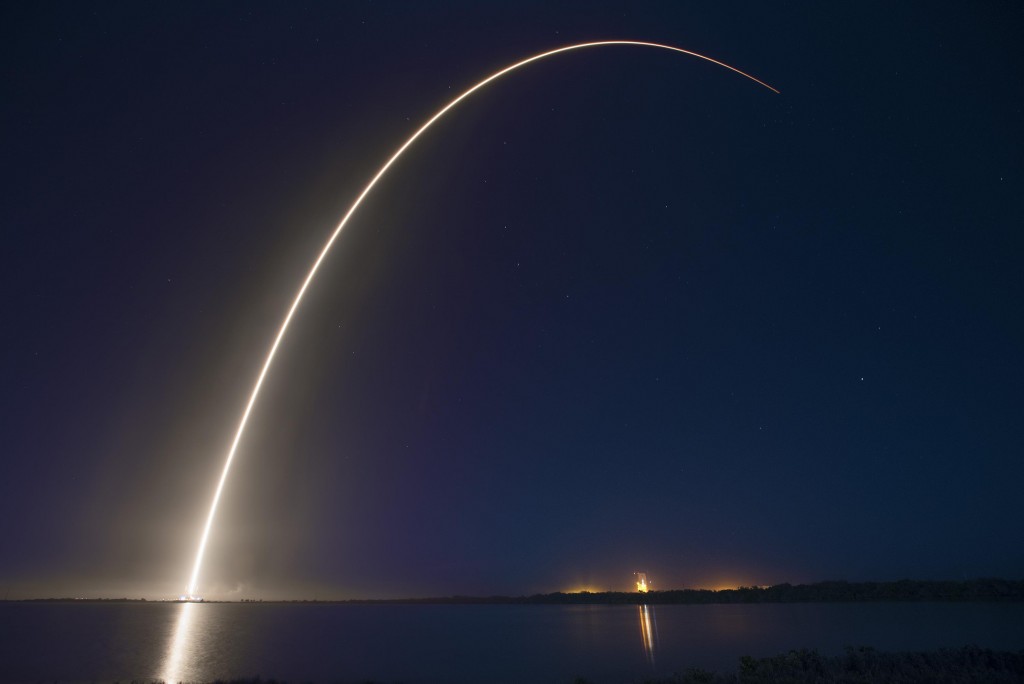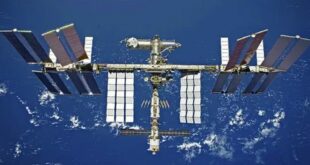Building and launching a satellite is one thing, but keeping the costs down is another. Satellite operators are constantly looking for ways in which they can get more for their money and deliver a satellite of the highest quality but at lower cost. The use of electric propulsion can provide an effective means for operators to peg costs back without compromising on quality and capacity.
Any satellite operator will tell you about the challenges of developing a spacecraft and their top priority is to keep their costs down to the fullest extent possible. One of the main outlays for any operator is the cost of launching their satellite into orbit and if they can keep the mass of the spacecraft down, they can maximise payload and get a cheaper ride into space. A means of doing this is using electric propulsion, the alternative to chemical propulsion and a method that is attracting attention from satellite operators today.
The satellite design process is based around a series of compromises and trade-offs. The satellite manufacturer has to work within the parameters given to them by the operator and, if their schedule allows, and immediate revenue generation is not absolutely necessary, then electric propulsion can be a good solution.
When a launch vehicle places a satellite into orbit, this is not its final operating station. The satellite itself needs to travel in order to reach its final orbit. Rockets will place the satellite into what is known as a “transfer” orbit. Then, the satellite must propel itself to its final operational orbital slot. The propulsion method used to get the spacecraft to its slot varies, but there are two types of propulsion methods available to spacecraft manufacturers today: chemical and electric.
Chemical propulsion can consist of one (monopropellant) or two chemicals that are burned in a controllable way. Combustion takes place in a chamber and the resulting gasses produced are ejected into space through an opening or nozzle, to provide thrust. By varying the amount of fuel burned and the shape of the nozzle (which controls the velocity of the engine or thrusters) it is easy to cater for many different needs that can vary from lifting a rocket to manoeuvring a very small satellite. The problem with chemical propulsion is its complex nature – it requires complicated systems such as pipes, tanks and valves plus extremely delicate control, to ensure that it is successful. By its nature, it is also hazardous and energy limited because the chemical reactants have a fixed amount of energy per unit mass, which limits the achievable exhaust velocity or specific impulse. That said, chemical propulsion can provide high thrust levels and high power levels and can transport a satellite to its final orbit quickly.
The alternative to chemical propulsion is all-electric propulsion and this has gained a higher level of interest in the past few years. There are many options available to operators including the Boeing 702SP platform, Orbital’s GEOStar-3 and SSL’s 1300 platform. Platforms are very flexible and manufacturers can offer all-chemical, all-electric or a hybrid approach to propulsion.
How does it work?
All-electric propulsion uses gas to produce ions. In this case, xenon gas is pushed into a chamber at high pressure, and atoms are charged which form a plasma of ions and electrons of equal number. This ionised plasma is created in a chamber with a highly positive charge and the ions are then attracted to an accelerator grid, which subsequently thrusts them out into space. The thrust created is actually quite low and it would not be effective at propelling anything on earth. However, in the vacuum of space, the thrust is effective and this type of propulsion is highly reliable and can provide thrust for a long period of time, making it ideal for deep space missions, where a spacecraft will be on the move for many months or years.
Electric propulsion offers several advantages. First it is safer. Electric-propulsion engines are also more efficient than chemical ones, in the sense that they require much less propellant to produce the same overall effect, that being a particular increase in spacecraft velocity. The propellant is ejected up to 20 times faster than with classical thrusters and, therefore, the same propelling force is obtained with 20 times less propellant. The only negative point is that chemical engines can eject massive amounts of propellant, while electric thrusters work with very small flows so that they push the spacecraft very gently compared with chemical systems. Consequently, it takes much longer to achieve a particular speed and hence when high acceleration is critical, electrical propulsion cannot be used, at least in its current forms. On the other hand, the force it produces can be applied continuously for very long periods – months or even years.
Electric thrusters also give the ability to regulate the force applied to the spacecraft very accurately, making it possible to control the spacecraft’s position and orientation along its orbit with incomparable precision.
The low and constant thrust provided by ion propulsion means that spacecraft may not move to their desired position as quickly as a chemically propelled spacecraft, but they are a great deal lower in mass and much more fuel efficient. In addition, without the requirement for large fuel tanks, operators can grasp the opportunity to have a more lightweight spacecraft that can be launched on smaller rockets or can take advantage of the available space by adding more payloads such as transponders and other technology to increase the revenue potential of the spacecraft. The all-electric satellite can give the same amount of power and throughput at a much lower mass, making it cheaper to launch. Yes, all-electric spacecraft can take up to nine months to reach their destination in orbit, but if an operator plans correctly, they will make great savings and get more for their money.
There is a good level of interest from commercial operators in electric propulsion. However, chemical propulsion literally enables the operator to position their spacecraft quickly and, therefore, to begin operations sooner than an electric propelled satellite.
However, the advances being made in electric or ion propulsion technology are about to take things to the next level and may mean that electric propulsion can be more attractive for commercial operators that need to start making revenue from their satellites as soon as possible after launch.
Nasa has just recently finished testing its Evolutionary Xenon Thruster or NEXT, which ran steadily for over 48,000 hours in a high vacuum chamber at the Glenn Research Center. The thrust created by the NEXT engine could propel spacecraft at speeds of up to 200,000 mph. But probably the most notable and impressive result of the NEXT experiment was the fact that Nasa only used 870kg of xenon gas. A conventional rocket would use 10,000 kg of propellant to gain the same momentum. This is a huge difference in mass.
Another thruster, also developed at Glenn, the Nasa-457M Hall thruster, is the largest ion thruster ever built and tested. It has shown more than 10 times more power and thrust than other such systems. The thruster will revolutionise the next generation of spacecraft, cutting in half some launch costs, enabling future missions to other planets for deep space missions, and more than doubling the weight of commercial payloads (such as communications satellites) that can be transported to geostationary orbit.
There is much innovation taking place in the field of propulsion and the satellite industry is focused on the ability to get the very most out of electric propulsion for commercial space platforms.
All-electric satellites and Falcon 9
The first two all-electric satellites were launched from Cape Canaveral by a SpaceX Falcon 9 rocket on February 28, 2015. The Falcon 9 delivered the ABS 3A and EUTELSAT 115 West B all-electric satellites to a supersynchronous transfer orbit. Thirty minutes into flight, the ABS 3A satellite deployed into a supersynchronous transfer orbit followed by EUTELSAT 115 West B approximately five minutes later. The satellites then fired their thrusters to reach geosynchronous orbits, which took around eight months to complete.
ABS 3A is now located at 3 degrees West and connects the Americas, Europe, Africa and the Middle East. EUTELSAT 115 West B is located at 114.9 degrees West and provides coverage from Alaska and Canada to South America.
With the two first ever all-electric satellites launched, the industry has reached another milestone and given another very flexible option to spacecraft operators. There are some very obvious benefits that can be gained from an all-electric approach. Its slow and steady means of propulsion gives it the ability to reliably propel missions into deeper space. For the commercial operator, it gives more room to play with the opportunity to increase the payload and to lower the mass of the spacecraft and, therefore, reduce expensive launch costs. As seen here, constant innovation is being undertaken by commercial players and also the likes of Nasa and the European Space Agency (ESA) that are also exploring the ways in which ion propulsion can be given a boost. For now, however, the amount of propulsion is dependent on the solar arrays of a spacecraft and this is limited.
The future of electric propulsion holds huge potential and there is discussion taking place on how it could take us much deeper into space, enabling us to travel to the moon, Mars and missions well beyond. For the moment though, and on a more pragmatic note, electric propulsion is an enabler for keeping costs lower without compromising on power and throughput. Deep understanding of this type of propulsion and what it can do for is only just beginning.
Check Also
MDA Space Receives Contract Extension Towards the ISS
MDA Space has announced it has received a $250 million contract extension from the Canadian Space Agency (CSA) to continue supporting robotics operations on the International Space Station (ISS) from 2025 to 2030. Furthermore, as part of the contract, MDA Space will now fulfil robotics flight controller duties to support mission operations on the ISS.
 SpaceWatch.Global An independent perspective on space
SpaceWatch.Global An independent perspective on space


